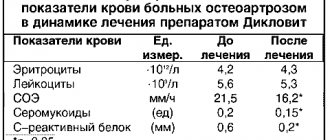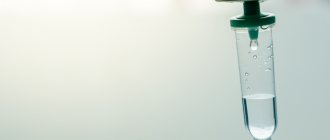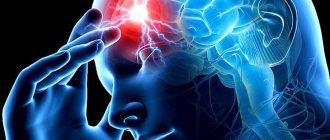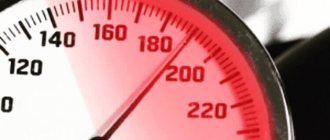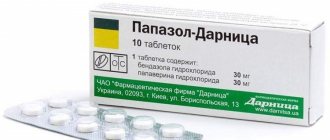Hemostatic (antihemorrhagic, hemostatic) drugs are a group of drugs that are used to stop bleeding (hemorrhages) and prevent excessive blood loss.
Normally, blood is a fluid liquid - a suspension of formed elements (erythrocytes, leukocytes, platelets) in plasma. However, during bleeding, blood is able to change its rheological (fluid) properties - it becomes excessively thick and viscous, and then solidifies at the site of damage to the vessel wall (coagulates), forming a clot (thrombus). The thrombus closes the lumen of the wound and thereby prevents further bleeding and loss of blood from the body.
In case of extensive bleeding or in diseases that are accompanied by a violation of the formation of blood clots, the blood does not have time or is not able to clot in time. This leads to excessive blood loss, and then to shock, oxygen starvation of organs (especially the brain and heart) and the development of various kinds of negative consequences, including death. In this case, hemostatic drugs are used.
Indications for use
Hemostatic drugs are used for conditions associated with blood clotting disorders and bleeding.
Fibrinolysis inhibitors are used to stop severe bleeding during operations (especially on the heart, lungs, large vessels), extensive injuries, birth hemorrhages, reduced blood clotting in liver diseases, as well as in case of overdose of fibrinolytic drugs (fibrinolysin, streptokinase, alteplase, urokinase, tenecteplase and etc.).
Aprotinin is additionally used for diseases of the pancreas: acute pancreatitis (including alcoholic), severe injuries and pancreatic cancer.
Vitamin K preparations are used for bleeding associated with vitamin K deficiency in the body: hemorrhagic syndrome of newborns, liver diseases (cholelithiasis and obstructive jaundice) and intestinal diseases (enterocolitis, Crohn's disease). In addition, vitamin K preparations are used for bleeding caused by an overdose of indirect anticoagulants - warfarin, acenocoumarol, phenindione.
Herbal hemostatics are indicated for uterine bleeding (menorrhagia), minor bleeding from small vessels of the stomach and intestines.
Hemostatic drugs for local use are used to stop capillary and parenchymal bleeding (from internal organs) during open abdominal operations.
Etamsylate is used for the prevention and treatment of surgical bleeding, as well as for uterine, nosebleeds, bleeding gums due to periodontal disease, and gingivitis.
Eltrombopag and recombinant thrombopoietin are indicated for the treatment of idiopathic thrombocytopenic purpura - a chronically low level of platelets in the blood, which is dangerous due to frequent bleeding - when the spleen is removed.
Emicizumab is used to treat hemophilia, an inherited disease associated with blood clotting disorders and life-threatening bleeding.
Clotting factor drugs are used for severe, extensive bleeding, as well as for the treatment of hemophilia.
Treatment of bleeding from hemorrhoids
Bleeding is just a symptom. Therefore, treatment should be aimed at eliminating the underlying cause causing the bleeding.
Only on the basis of competent diagnostic data can a specialist prescribe the correct treatment for hemorrhoids. If we are talking about the initial stages, then usually the therapeutic complex includes a special intestinal-friendly diet, vitamin supplements, and recommendations for preventive measures. The main treatment for bleeding from hemorrhoids and other symptoms is associated with the use of medications.
Modern antihemorrhoidal drugs are usually available in the form of suppositories and creams for topical use. A targeted impact on the source of pathology gives positive results.
Classification of hemostatic drugs
Hemostatic drugs are classified into:
- fibrinolysis inhibitors: amino acids (tranexamic acid, aminocaproic acid), protease inhibitors (aprotinin);
- vitamin K preparations: menadione, phytomenadione;
- herbal preparations: liquid extract of water pepper, nettle leaves, yarrow herb;
- hemostatic agents for local use: thrombin, fibrinogen, Ambien, calcium chloride;
- other hemostatic drugs for systemic use: etamsylate, eltrombopag, emicizumab, recombinant thrombopoietin.
In addition, preparations of proteins that regulate blood coagulation - coagulation factors II, VII, VIIa, VIII, IX, X and their combinations, von Willebrand factor, nonacog alpha - have a hemostatic effect.
List of effective drugs
Common remedies for hemorrhoids are divided according to their effect in suppressing symptoms, active ingredients and cost. The list of popular medications is presented:
Relief
Medicine with anti-inflammatory, vasoconstrictive and regenerative spectrum of action. By reducing the lumen of blood vessels, the burning sensation and itching are reduced, and tissue restoration begins. The ointment stops bleeding and reduces the level of inflammation. The medicine is recommended for use for fissures in the anal area.
The drug is prohibited:
- patients under 12 years of age;
- with thromboembolism;
- granulocytopenia;
- increased sensitivity.
Particular caution is needed when used by patients with diabetes mellitus, prostate hypertrophy, hyperthyroidism, a history of hypertension, during pregnancy or breastfeeding.
Bezornilom
The medicine has an analgesic effect and can be used to prevent the development of swelling and inflammation. The composition of the drug is presented:
- borneol;
- pearls;
- amber;
- musk; zinc compounds.
The medication is prescribed to patients with hemorrhoids, anal wounds after surgery, fissures and eczema of the anus. It is considered an effective remedy with an improvement in the general condition of the patient on the second day from the start of therapy.
The drug is not prescribed for individual intolerance to individual components.
Proctosan
A non-hormonal agent with the effect of suppressing inflammation and the active component bufexamac. The vismus contained in the composition stops local bleeding and has an astringent effect, and titanium accelerates the regeneration of cracked tissues.
Lidocaine relieves pain, burning and itching. The drug is not recommended for children, pregnant and lactating women, patients with syphilis, pelvic tuberculosis.
Heparin ointment
Each of the components of the drug has an individual spectrum of action:
- antithrombic effect with a decrease in the inflammatory process - with heparin;
- anesthetic - benzocaine;
- vasodilator - benzyl nicotinate.
The medication is prohibited for use in cases of skin necrosis and damage, a tendency to spontaneous bleeding, and decreased blood clotting.
Troxevasin
The medicine reduces capillary fragility, has an anti-edematous and anti-inflammatory effect. The ointment accelerates regeneration processes at the cellular level. Hypoallergenic, does not provoke pronounced adverse reactions to the component composition. The drug is contraindicated in people with a tendency to bleeding, with a reduced rate of blood clotting and damage to the skin.
Enlarged hemorrhoids are called hemorrhoids. This disease, both initial and advanced forms, may be accompanied by bloody discharge (traces of blood may be in the stool). How to treat bleeding hemorrhoids is a problem that worries patients who have at least once encountered this unpleasant symptom of the disease.
The intensity of bleeding may indicate the stage of the disease.
Causes
Bleeding hemorrhoids with blood can result from a number of reasons:
- Chronic constipation. Irregular bowel movements lead to the accumulation of large amounts of feces and their hardening. During defecation, feces passing through the anal canal injure the mucous tissue of the hemorrhoids, which causes bleeding.
- Insufficiently good tone of the vascular walls. Due to a number of circumstances, the elasticity of blood vessels decreases, tears in the mucous membrane appear, and, accordingly, bloody discharge.
- Strong efforts during defecation.
- Anal sex.
- Intestinal disorder accompanied by prolonged diarrhea.
- Physical inactivity.
Only an individual approach to each patient guarantees effective treatment of bleeding hemorrhoids. People with hemorrhoids may experience bleeding if they work in physically demanding jobs or are exposed to excessive force during sports. Risk factors include pregnancy, alcohol abuse, and addiction to very spicy foods.
Symptoms
Consultation with a proctologist is a mandatory measure when the first signs of hemorrhoids appear. Self-medication can only aggravate the problem and delay the healing process. With “untreated” hemorrhoids, the likelihood of complications occurring is very high. The main symptom of bleeding hemorrhoids is the appearance of bloody discharge during or after bowel movements. They can be seen on toilet paper, underwear, in feces, etc. Hemorrhoidal bleeding is not always accompanied by pain. The abundance of bleeding depends on the degree of progression of the disease, on the regularity of constipation, on the range of food eaten and other important points. Treatment of bleeding hemorrhoids should be started immediately, without postponing this serious problem “for later.”
Treatment measures
Highly qualified specialists of the proctology department of the Global Clinic Center use a whole arsenal of effective techniques to treat bleeding hemorrhoids. Minimally invasive technologies for combating hemorrhoids are especially relevant:
- infrared photocoagulation;
- ligation of hemorrhoids with latex rings;
- sclerotherapy;
- radio wave treatment;
- laser vaporization;
- disarterization.
All these treatment methods are minimally invasive, take little time, and do not require hospitalization of patients. Infrared photocoagulation - cauterization of the hemorrhoid at its base at two or three points. Due to a decrease in blood supply, the node ceases to be supplied with blood and is reduced.
When using latex ligation, a latex ring (made of thin, high-quality rubber) is placed on the base of the node, the node dies on its own and naturally comes out (along with the ring) during defecation. Sclerotherapy consists of injecting a special substance (sclerosant) into the hemorrhoid. This leads to a decrease and reduction of the node.
A non-contact method of treating hemorrhoids is possible thanks to the use of radio waves. For this, proctologists use a special radio wave apparatus. The essence of laser vaporization is the evaporation of hemorrhoidal formations using laser radiation, without the formation of wounds in the anal canal.
The most modern equipment is in the capable hands of our center’s proctologists: laser unit. The technologies used by our specialists correspond to the world level - LHP, HAL-RAR, LigaSure.
Entrust the treatment of bleeding hemorrhoids to the proctologists of our center - and a positive result will not be long in coming.
Treatment of hemorrhoids after childbirth
Unfortunately, almost every woman in the postpartum period faces such a problem as hemorrhoids. It usually occurs due to excessive tension in the muscles of the perineum and stretching of the hemorrhoidal veins during the pushing of the woman in labor. It has been noted that the development of hemorrhoids can begin during pregnancy, which is facilitated by weight gain and a sedentary lifestyle. In this regard, it is recommended to carry out regular prevention of hemorrhoids both during pregnancy and in the postpartum period. Often it is pregnancy and childbirth that become the very catalyst that provokes the development of hemorrhoids. And there are a number of reasons for this.
Causes of postpartum hemorrhoids
Firstly, during pregnancy (usually in the second and third trimester) and especially during childbirth (of course, if they occur naturally), the pressure of the enlarged uterus and fetus on the rectum becomes simply colossal, while blood flow to these places becomes much more difficult. When pushing, the sphincter muscles experience particular overload. This also includes intra-abdominal pressure, which is increased in most pregnant women in the later stages, not to mention situations where there is a multiple pregnancy.
Quite often, a pregnant woman may have only minor symptoms, but during childbirth, when intra-abdominal pressure rapidly increases, nodules and fissures can form. The severity of the lesions in this case depends on the individual characteristics of the woman in labor, the weight of the child, and the course of labor.
Frequent constipation can also provoke the appearance of hemorrhoids, which, alas, is not at all uncommon in pregnant women. This is due, first of all, to an increased amount of progesterone - the so-called pregnancy hormone, which can cause various kinds of digestive disorders, and also contribute to a slight weakening of the tone of the walls of blood vessels, which is fraught with more severe stretching of them, and mild intestinal atony. As a result of the described changes, the digestive process in a pregnant woman becomes slower, thereby causing constipation. Constipation, in turn, increases pressure on the rectum and contributes to blood stagnation. This results in the appearance of characteristic hemorrhoids (pictured).
Among other reasons leading to the formation of hemorrhoids, one can also highlight nutrition with foods that contain insufficient amounts of fiber, excess body weight (not only during pregnancy, but also before and after it), bad habits (smoking and alcohol), constant sedentary work, lifting heavy objects without proper training, as well as the use of hormonal drugs, which are often prescribed by doctors for complicated pregnancies. Therefore, it is advisable to think about all this even before pregnancy and childbirth.
It is especially worthwhile to be attentive to those women whose families have relatives who were or are suffering from hemorrhoids. In this case, there is a high probability that insufficient elasticity of the veins and, as a result, the risk of developing hemorrhoids, is a hereditary trait in your family.
Characteristic signs of hemorrhoids
At the very beginning of the development of the disease, at its first stage, characteristic signs indicating the presence of hemorrhoids are:
- discomfort in the rectum (pain, heaviness, itching, burning);
- the presence of blood in the stool after defecation;
- increased body temperature;
- general malaise;
- signs of intoxication of the body.
Subsequently, as the rectal veins enlarge, peculiar “bumps” or hemorrhoids are formed, which were mentioned just above. Their appearance is characterized by the second stage of the disease. All this is accompanied by pain (sometimes very pronounced) and inflammation. Particularly painful and prone to complications are internal hemorrhoids , when the nodes are located inside the anal canal. External hemorrhoids , despite their unesthetic appearance in terms of pain and complications, cause less trouble.
The second stage during pregnancy can persist for a fairly long period of time, however, undetected and untreated hemorrhoids during childbirth can progress to the next, third stage, which is characterized by the prolapse of nodes from the anus. If appropriate measures are not taken in time, the disease will progress to the last fourth stage, when it is almost impossible to move the hemorrhoids inward manually; they significantly increase in size, constantly bleed and become inflamed.
What are the dangers of hemorrhoids after childbirth and how to deal with this problem correctly?
You should know that hemorrhoids can occur not only during pregnancy, but directly during childbirth. Be that as it may, in the postpartum period, hemorrhoids can make the body even more vulnerable than usual. Therefore, it is so important to monitor your health so as not to trigger the development of the disease and promptly seek help from a specialist. It is known that after pregnancy and childbirth, a woman’s immune system needs some time to fully restore the body’s defenses. During this period, a disease such as hemorrhoids, for example, can only weaken them further. Let's add here the problems of caring for a child and breastfeeding him. Indeed, when the disease worsens, the bleeding that occurs in a young mother can contribute to infection with dangerous infections. There is also a high probability of developing anemia, paraproctitis, thrombophlebitis, and even necrosis of the external hemorrhoid when it is pinched. In addition, we should not forget that, based on numerous medical studies, hemorrhoids are recognized as one of the indirect causes of cancer. This should be taken into account by all those who consider hemorrhoids to be a minor disease that should not be paid attention to. Hemorrhoids will not go away on their own; they must be treated! Experienced proctologists at the ViTerra .
In the postpartum period, treatment of hemorrhoids is usually extremely gentle. Even at the third or fourth stage, when treatment of external hemorrhoids is already necessary, if the patient’s condition allows it, they try to postpone the time of surgical intervention to a later date.
What can help reduce the symptoms of the disease?
Typically, hemorrhoids after childbirth occur in an acute form: first there is itching, burning, discomfort, and a feeling of heaviness in the anus. Over time, the pain increases more and more, bleeding appears during the act of defecation, which can provoke anemia, which is especially undesirable for a woman after childbirth. Hemorrhoids increase significantly in size and they fall out. Every movement for a woman turns out to be very painful, it is difficult for her to walk, sit, even the act of defecation becomes extremely painful. The anal area becomes inflamed and cracks appear. In this case, immediate treatment is necessary.
- The first step is to improve your diet. This will not only ease the course of hemorrhoids, but will also be beneficial for the child, especially if the woman is breastfeeding.
- You can and should use local remedies that can cure hemorrhoids at home. Herbs, decoctions, tinctures - all of this can be used as external remedies for hemorrhoids.
- It is also worth making sure that you do not remain in an upright or sitting position for a long period of time. It is advisable to find at least a few minutes a day for special gymnastics, which helps strengthen the muscles in the pelvic area.
- Any medications should be taken with extreme caution. If your baby is breastfed, do not take any medications without first checking with your doctor. Only a qualified specialist will be able to prescribe medications that will not pass into your baby’s milk and, therefore, will not cause harm to his body.
- You should also be careful when using laxatives, which are often recommended for hemorrhoids. For pregnant and lactating women, such drugs are strictly contraindicated.
- Make an appointment with a proctologist at clinic No. 1 ViTerra Belyaevo, and then you can be sure that your health and the health of your baby are completely safe! The doctor will conduct an examination and prescribe you appropriate treatment, including the use of suppositories, ointments or tablets for hemorrhoids, recommend you a proper diet rich in fiber and avoid the problem of constipation, and also suggest walking more and doing a number of exercises to strengthen the pelvic muscles. Remember that if you have any suspicions about hemorrhoids, you should avoid wearing tight underwear, do not lift heavy objects, and do not put off visiting a specialist.
Prevention of hemorrhoids after childbirth
Prevention of hemorrhoids is an effective technique that, if it does not help to completely avoid postpartum hemorrhoids, will at least prevent its severe course. Such preventive measures should be carried out during pregnancy.
1. Women who are expecting a baby are advised to carefully monitor their diet to avoid constipation and other problems.
2. They should diversify their diet with natural food, fresh vegetables and fruits. Coffee, chocolate, pastries and fatty foods are best avoided. You should also avoid spicy foods, which can irritate the rectal mucosa, and legumes, as they cause severe gas formation.
3. When preventing hemorrhoids, the correct daily routine is considered very important. It is recommended to visit the toilet at the same time, preferably in the morning. During bowel movements, you should not push too hard so as not to provoke swelling of the hemorrhoidal veins. In addition, it is very important to maintain personal hygiene. Doctors advise that after each bowel movement, wash yourself with clean, cool water and wipe the anal area dry with soft toilet paper or a towel.
4. An important point in the prevention of hemorrhoids, especially postpartum, is physical activity. Despite the fact that heavy loads are contraindicated for pregnant women, light exercises will only benefit them. In addition, pregnant women are advised to walk a lot in the fresh air, which will not only help prevent hemorrhoids, but also strengthen the immune system.
5. Another method of prevention is Kegel exercises . Their essence is to alternately tense and relax the muscles around the anus and vagina. If you perform such exercises regularly, you can prevent not only postpartum hemorrhoids, but also uterine prolapse and laxity of the vaginal muscles.
As a parting word
We wish each of you that your postpartum period will be filled only with the most wonderful moments and joyful worries about your baby growing up every day, and not with sad thoughts and worries about how to independently cope with alarming symptoms that indicate the development of hemorrhoids.
